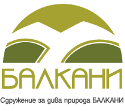Dragoman Marsh
Restoring the natural wetlands, grasslands and forest ecosystems of the Dragoman Marsh Karst Complex
One of just a handful of similar habitats on the Balkan Peninsula, the Dragoman Marsh Karst Complex is unique in Bulgaria. The complex consists of limestone hills, with the depressions between them boasting biodiverse wetlands. Many of these have been adversely affected by anthropogenic activity.
Thanks to the efforts of the Balkani Wildlife Society, a Bulgarian NGO, the Dragoman Marsh Karst Complex was declared a Ramsar site in 2011. While many wildlife species have already returned to the area, many local wetlands (the Dragoman and Aldomirovtsi Marshes, wet meadows and fishponds) still suffer from drainage, poor management, contamination and eutrophication, and therefore need further restoration. The surrounding grasslands, which contain many endemic and rare species, also require on-site management. This project is now working to restore the natural wetlands, grasslands and forest ecosystems of the area, together with their associated flora and fauna, as well as focusing on the environmental education and active participation of local stakeholders.

One of just a handful of similar habitats on the Balkan Peninsula, the Dragoman Marsh Karst Complex is unique in Bulgaria. The complex consists of limestone hills, with the depressions between them boasting biodiverse wetlands. Many of these have been adversely affected by anthropogenic activity.
Thanks to the efforts of the Balkani Wildlife Society, a Bulgarian NGO, the Dragoman Marsh Karst Complex was declared a Ramsar site in 2011. While many wildlife species have already returned to the area, many local wetlands (the Dragoman and Aldomirovtsi Marshes, wet meadows and fishponds) still suffer from drainage, poor management, contamination and eutrophication, and therefore need further restoration. The surrounding grasslands, which contain many endemic and rare species, also require on-site management. This project is now working to restore the natural wetlands, grasslands and forest ecosystems of the area, together with their associated flora and fauna, as well as focusing on the environmental education and active participation of local stakeholders.


